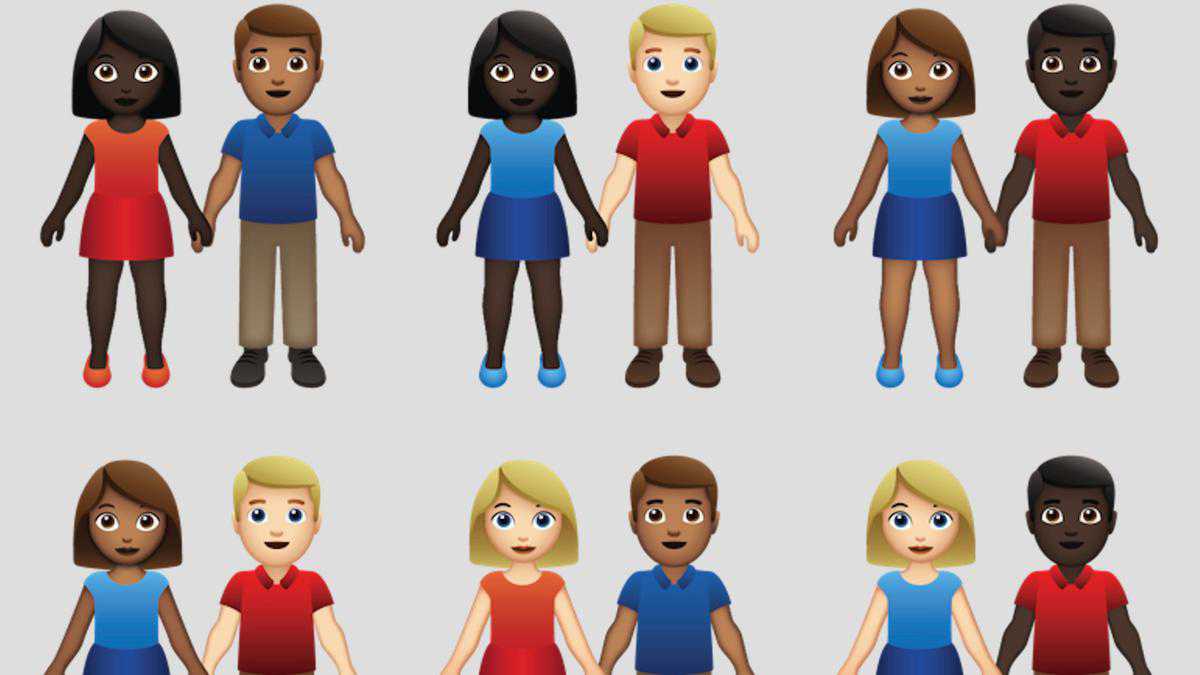Emojis to become more inclusive for interracial couples
10 March, 2019

Interracial couples have won a small victory, as 71 new variations of couples in emojis of colour have been approved by emoji authority, Unicode Consortium.
It follows a year-long project dreamed up by dating app service Tinder, along with tech activist group Emojination, to make emojis more inclusive for couples of colour.
Until now, two or more people on various platforms and devices have only been available in the default yellow hue.
'Spread acceptance'
Jenny Campbell, the chief marketing officer for Tinder, isn’t worried about distribution after the company mounted a campaign and petition drive in support of the technical proposal it submitted to Unicode.
“Ultimately, we wanted to get the interracial emoji couple on people’s keyboards not only for equality, but also to spread acceptance for all couples no matter what their race,” she told the Associated Press. “Our users are craving a way to express themselves visually and see themselves reflected in our everyday tech language.”
More than 50,000 people signed Tinder's online petition.
While facial features and hair textures are yet to be determined by some vendors, Tinder said the use of six existing skin tones already available for one-person emojis and various others using human parts is a step in the right direction at a time when the little pictographs remain a readily accessible way for the world to express itself. The lack of colour options, the company said, felt like a slight to interracial couples.
"Even as our social behaviours have evolved and interracial dating and marriage has become more prevalent, visual representation of these relationships in technology has lagged far behind," Campbell said.
It follows another update of 230 new emojis, available as of this month, that are more diverse and inclusive. The majority represent people with disabilities and their needs, from ear aids and prosthetic limbs to guide and service dogs. Human figurines in both manual and motorised wheelchairs, and carrying probing canes, are part of the list, while three new faces have also been added to represent those with hearing disabilities. A new emoji to symbolise menstruation will also be added, following a campaign from Plan International UK to end girls' shame around periods.
A series of graphic depictions of items common to certain cultures are also being added. This includes: maté, a caffeine drink popular in South American countries; a Hindu temple, sari, diya lamp and auto rickshaw from India; and a falafel, the fried chickpea snack much loved in the Middle East and, apparently, New York City.
